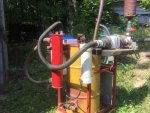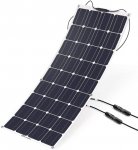hiwall
Has No Life - Lives on TB

Kyle Mills: Terror or bio attack, nukes? No, America's greatest threat is our vulnerable electrical grid
In researching my new book I stumbled upon what I now believe to be America’s greatest weakness
It’s been called the most complex machine in the world and that’s probably a fair description. Three thousand three hundred utility companies, fifty-five thousand individual substations, and two hundred thousand miles of transmission lines all coordinate to meet the country’s insatiable demand for power. Unfortunately, it’s this scope and complexity that makes us so vulnerable.
And this isn’t just a theoretical threat. In 2013, a meticulously planned attack was carried out on a substation near San Jose, California. It caused fifteen million dollars in damage and looked very much like a dry run for something bigger.
None of the perpetrators were ever caught and if they are indeed plotting something more ambitious, it could be unimaginably destructive.
According to the Federal Energy Regulatory Commission, only nine critical substations would have to be disabled to plunge the entire country into darkness for eighteen months or more. Nine. None of which likely have much more security than the San Jose facility.
Even more sobering are the cyberattacks. According to former Energy Secretary Rick Perry, malicious actors probe our systems hundreds of thousands of times a day.COVID has given us all a glimpse into the dangers of not being prepared for a crisis. We now have some inkling as to what it would be like to try to survive without the machinery that makes modern society possible.
One of the most serious incidents occurred in 2017 when Russian hackers penetrated deep enough to actually take control of parts of our grid. Based on testimony given to Congress by the director of the National Security Agency, a number of our enemies likely already have the ability to put the entire country in the dark.
This all leads to an obvious question. What would happen if such an attack occurred?
Grocery stores would be emptied in a matter of days and, without power, replacement products could be neither manufactured nor transported.
Critical medication would no longer be available. There would be no air-conditioning or heat. Those who live in cities would be trapped.
Cars full of people trying to escape would clog the streets, permanently blocking them with vehicles that had run out of gas while waiting in endless traffic jams.
Then, a couple of weeks in, the systems that bring water to our homes would begin to fail. And while a human can survive for a surprisingly long time without food, we die within days without fluids.
This would also lead to a breakdown in basic sanitation, contaminating whatever water sources were still available. Disease would spread and violence would erupt as people became increasingly desperate.
Normally, we could hunker down and wait for help from FEMA, the National Guard, and maybe even the U.S. military. But in a country-wide shutdown, that help would never arrive.
All those organizations operate on the principle that they can stage from places that still have power. Hurricane Sandy was a perfect example of this. While devastating to the eastern seaboard, the rest of the country remained online and able to provide assistance.
R. James Woolsey Jr., the former director of the CIA, summed it up nicely: If the power went out and stayed out for a year, between two-thirds and ninety percent of the American population would die. That’s more than both world wars and the bubonic plague combined.
Can we fix it? Yes. But not without a lot of commitment and money. We have to significantly improve our cybersecurity and create manual overrides in case our enemies find ways around those improvements.
We need to provide military bases with their own microgrids independent of the greater power supply.
We should incorporate renewables that remain operational when more traditional sources can’t be supplied with fuel or are forced to shut down for safety reasons.
We have to stockpile replacement parts that can be quickly distributed and installed.
Finally, substantial physical security will be required at the hundred or so substations that are absolutely critical to keeping America’s lights on.
The likelihood of one of our enemies mounting a significant military campaign against the American homeland is low. We have the most powerful armed forces in the world and our geographic isolation would be difficult to overcome. A surreptitious attack on our electrical infrastructure, though, is within easy reach.
COVID has given us all a glimpse into the dangers of not being prepared for a crisis. We now have some inkling as to what it would be like to try to survive without the machinery that makes modern society possible.
Based on our own government’s risk assessment and the shortages we’ve experienced during the pandemic—insignificant compared to what we would lose in the absence of our power supply—it’s difficult to think of a higher priority than making our grid is secure.
[Thread title and prefix changed to match original story - Dennis]
Last edited by a moderator:








